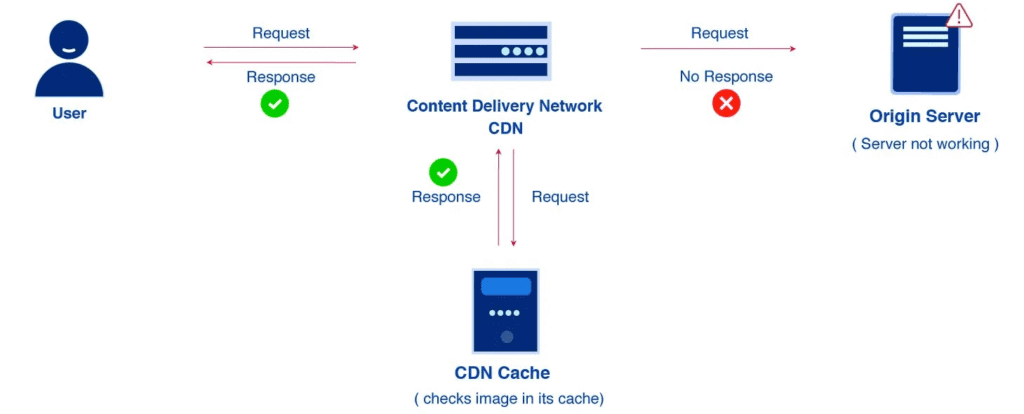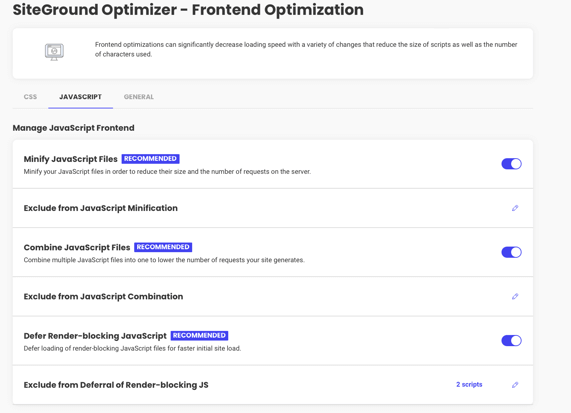
When it comes to website performance, speed is king. A fast-loading website not only provides a better user experience, but it also contributes to higher search engine rankings and increased conversion rates. In this guide, we’ll explore some essential tips for improving your website’s loading speed and delivering an exceptional experience to your visitors.

1. Optimize Images
Large, unoptimized images can significantly slow down your website. To optimize images for better performance:
- Compress your images using tools like TinyPNG or ImageOptim.
- Choose the appropriate image format (e.g., JPEG for photos, PNG for graphics with transparency).
- Use responsive images to serve the right size based on the user’s screen resolution.

2. Minify CSS, JavaScript, and HTML Files
Minifying your code involves removing unnecessary characters (such as spaces and comments) from your CSS, JavaScript, and HTML files. This process reduces file sizes and helps your website load faster. Use tools like CSSNano and UglifyJS to minify your code.
3. Leverage Browser Caching
Browser caching stores static files (such as images, CSS, and JavaScript) on the user’s device, reducing the need to download these files on subsequent visits. This can significantly improve loading speed for returning visitors. Check your server configuration and ensure that caching is enabled and properly configured.

4. Use a Content Delivery Network (CDN)
A CDN is a network of servers that caches and delivers your website’s content from the server closest to the user’s location. This reduces the distance between the user and the server, leading to faster loading times. Popular CDN providers include Cloudflare and Amazon CloudFront.

5. Enable Compression
Compression reduces the size of your website’s files, making them faster to download. Enable Gzip compression on your server to compress HTML, CSS, and JavaScript files before they’re sent to the user’s browser.
6. Remove Unused Plugins and Scripts
Plugins and scripts can add significant weight to your website and slow down its performance. Regularly review your website for any unused or outdated plugins and scripts and remove them to improve loading speed.

7. Optimize Database Queries
Slow database queries can contribute to poor website performance. Regularly optimize your database by removing unnecessary data, repairing fragmented tables, and ensuring that queries are running efficiently.
8. Use Lazy Loading
Lazy loading is a technique that delays the loading of off-screen content (such as images and videos) until the user scrolls to that point on the page. This can significantly improve loading times, particularly on pages with a lot of media content. Implement lazy loading using JavaScript libraries like lozad.js or lazysizes.
9. Prioritize Above-the-Fold Content
Optimize your website’s critical rendering path to ensure that above-the-fold content loads as quickly as possible. This can include inlining critical CSS, deferring non-critical CSS and JavaScript, and using asynchronous loading for scripts.
10. Monitor and Optimize Performance
Regularly monitor your website’s performance using tools like Google PageSpeed Insights or WebPageTest. Use the insights provided by these tools to identify areas for improvement and implement changes as needed. Remember that website optimization is an ongoing process and requires continuous monitoring and fine-tuning.

11. Implement HTTP/2
HTTP/2 is a modern protocol that improves website loading speed by enabling multiplexing, header compression, and server push. Most modern browsers and servers support HTTP/2, so make sure your server is configured to use it.
12. Avoid Redirects
Unnecessary redirects can slow down your website by adding extra HTTP requests. Minimize the use of redirects, and when they’re necessary, use server-side 301 redirects instead of client-side redirects.
13. Use Web Fonts Wisely
Custom web fonts can add style to your website but may also increase loading time. Limit the number of font variations you use, and consider using system fonts as a fallback for faster loading.
14. Optimize Third-Party Scripts
Third-party scripts, such as analytics, social sharing buttons, and chat widgets, can impact your website’s loading speed. Evaluate the performance of these scripts, and consider removing or replacing any that are causing significant slowdowns.
15. Test Your Website on Different Devices and Connection Speeds
Your website’s performance may vary depending on the user’s device and internet connection. Regularly test your website on various devices (desktop, mobile, tablet) and connection speeds (including slower connections) to ensure a consistent experience for all users.
At Axe Digital Studio, we understand the importance of a fast-loading website for your Kenyan business. Our team of experts can help you optimize your website for better performance, ensuring a seamless user experience that keeps your visitors engaged and coming back for more. In addition to our website design services, we also offer Google Ads and Facebook/Instagram Ads management for those looking to drive targeted traffic to their site. Don’t let a slow website hold your business back – contact us today to discuss how we can help you improve your website’s loading speed and overall performance.





